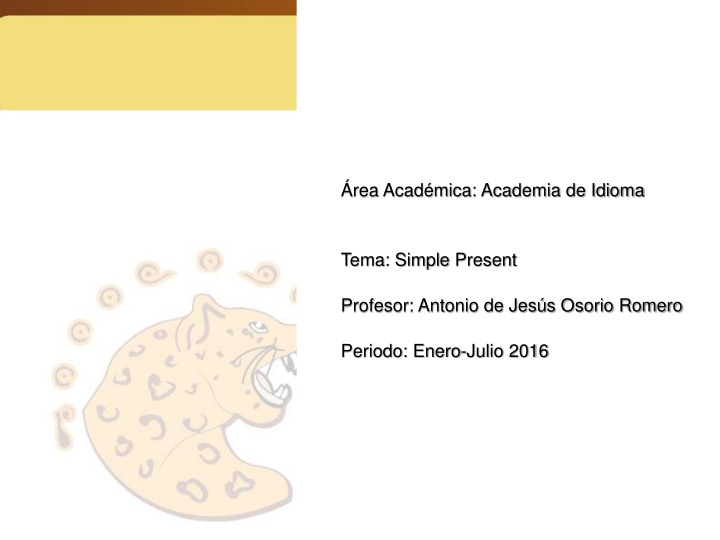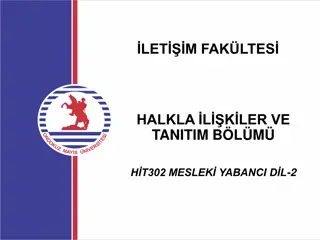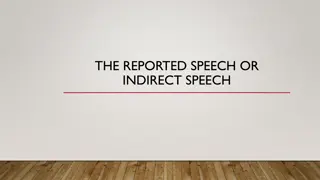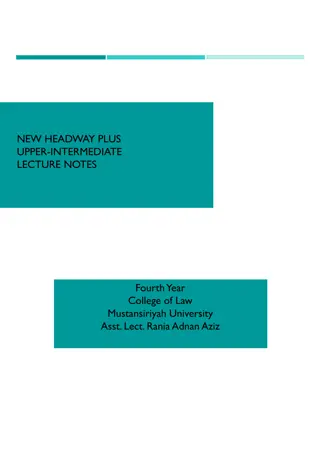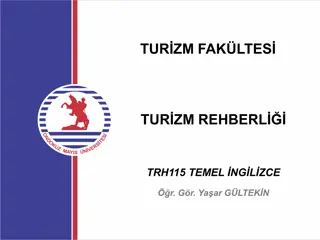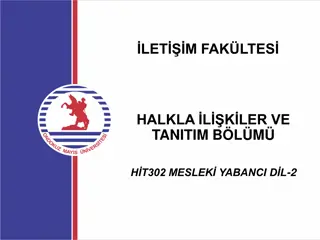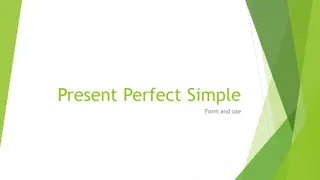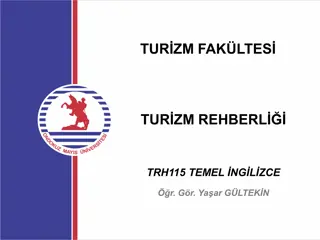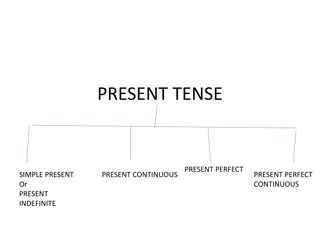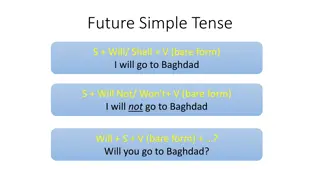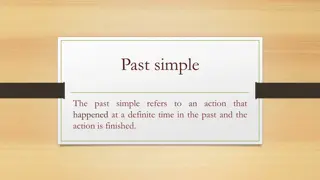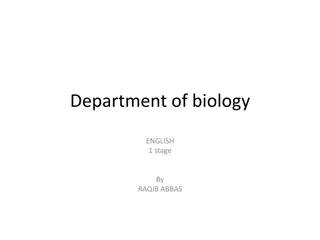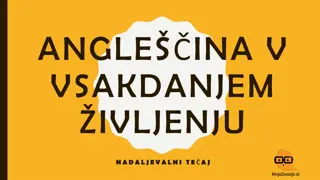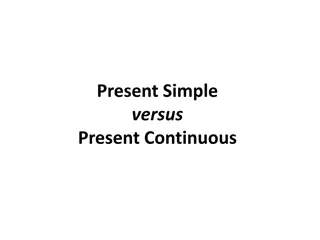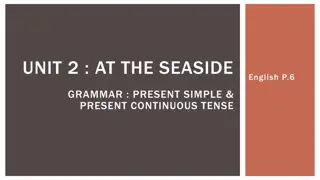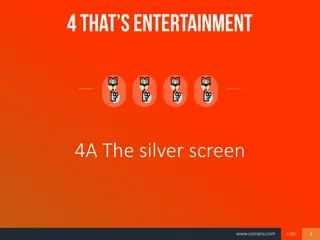Simple Present Tense: Use and Formation
This presentation delves into the Simple Present Tense, its usage, formation, and examples. Understand how to express routine activities, opinions, facts, and schedules using this fundamental English grammar aspect.
Download Presentation

Please find below an Image/Link to download the presentation.
The content on the website is provided AS IS for your information and personal use only. It may not be sold, licensed, or shared on other websites without obtaining consent from the author.If you encounter any issues during the download, it is possible that the publisher has removed the file from their server.
You are allowed to download the files provided on this website for personal or commercial use, subject to the condition that they are used lawfully. All files are the property of their respective owners.
The content on the website is provided AS IS for your information and personal use only. It may not be sold, licensed, or shared on other websites without obtaining consent from the author.
E N D
Presentation Transcript
rea Acadmica: Academia de Idioma Tema: Simple Present Profesor: Antonio de Jes s Osorio Romero Periodo: Enero-Julio 2016
Tema: Simple Present Abstract: In this presentation we will check the use of the simple present. We learn how to use and express in third person singular an plural as well as different changes in the verb forms. Keywords:Routine activities, verbs, pronouns, third person.
Simple present is used to talk about an action which happens on a regular basis. We use the present tense to talk about something that is true in the present: EXAMPLES I m nineteen years old. He lives in London. I m a student.
Simple present tells something that happens again and again in the present: I play football every weekend.
Usage of Simple Present Simple present tells something that is always true: EXAMPLES The adult human body contains 206 bones. Light travels at almost 300,000 kilometres per second.
FORMATION OF SIMPLE PRESENT TENSE Affirmative I think You think he, she, it thinks we think Interrogative Do I think ? Do you think? Does he, she, it think? Do we think? Negative I do not think. You don't think. He, she, it doesn't think. We don't think.
USE OF SIMPLE PRESENT The use of the simple present: The simple present is used: to give your opinion - I like ice cream. I don't like spicy food. to talk about schedules - The library opens at eight. It doesn't open at 7. to talk about daily habits (routine actions)- Sara eats a cheese for breakfast every day. She doesn't eat cereal. to give facts - The earth circles the sun. The moon doesn't circle the sun. NOTE:TEACH THE KID THE USAGE OF OF SIMPLE PRESENT TENSE SENTENCES.
Nancy and James are good friends .They speak good German . Nancy works in a restaurant downtown and James is a librarian . The children play in the garden every weekend . James and Nancy visit church together every Friday.
CHOOSE THE CORRECT OPTION 1. She always ________ in dance competitions.(participate/participates) 2. Mohan ________ every morning.(jog/jogs) 3. I _______ in France.(live/lives) 4. Jane ______ in a multinational company.(work/works) 5. Doctors ______ that junk food be avoided.(recommend/recommends) 6. He _____ angry very quickly.(get/gets)
FORM SENTENCES a) b) . c) .
a)My mother is a teacher. She _______ English. b)Rohan is my best friend. He _______ soccer. c) _____ you know the way out of this building? d) What ______ your father do? e) You can't ______ without water.
